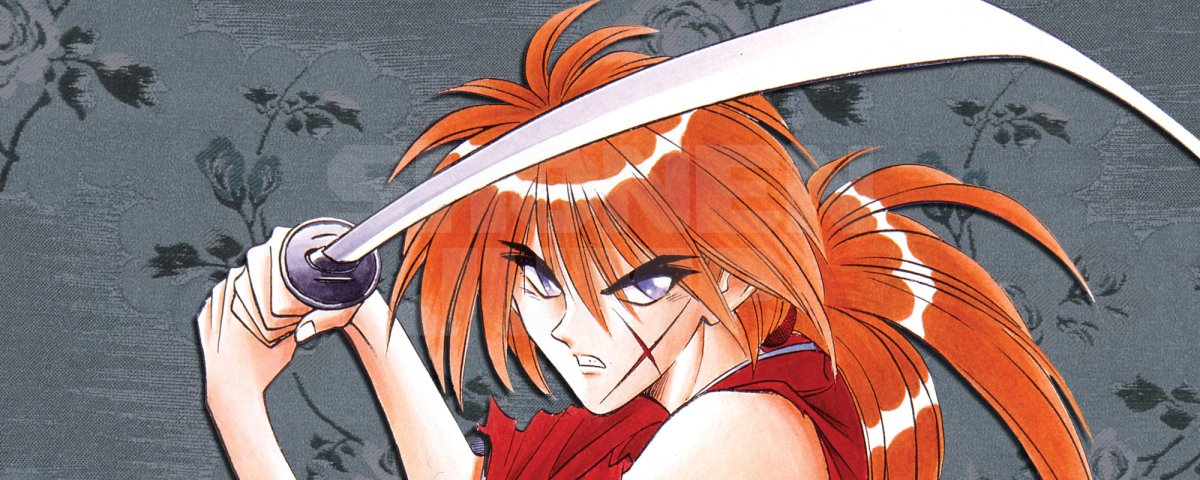The final film in the Rurouni Kenshin franchise, The Beginning, was released on Netflix on Friday.
Focusing once again on the life of swordsman Kenshin Himura (Takeru Satoh), the prequel explores how he came to be the wandering samurai fans know and love, how he got his cross-shaped scars, and why he vowed not to kill again.
In the film, which was helmed by franchise director Keishi Otomo, Kenshin is a ruthless assassin known as Hitokiri Battosai, or "Sword-drawing Manslayer," who fights for the Choshu clan during the Bakumatsu era.
During his blood-drenched dominion over Kyoto, Kenshin meets Tomoe Yukishiro (Kasumi Arimura), a woman who helps him realize there is more to life than his occupation.
Otomo has done a fantastic job of adapting Nobuhiro Watsuki's manga to the big screen since the first film's release in 2012, but he has also taken some creative license with the franchise.
The third film, Rurouni Kenshin: The Legend Ends, was changed significantly, for example, as Otomo opted to use a new setting and sidelined several characters from the manga to save time.
So, with that in mind, how does Rurouni Kenshin: The Beginning compare to its source material?

Enishi Doesn't Witness His Sister's Death
Perhaps the most significant change is how Tomoe's brother Enishi is given a less prominent role in the film.
The character is seen briefly with the Shadow Watch, the fighters trying to kill Kenshin, who task him with seeing his sister while she and the swordsman lay low in the countryside.
While they do reunite in the same way in the manga, the conversation between Tomoe and Enishi does not last very long before he makes a swift exit, glaring at Kenshin as he does so.
This is the last time he is seen in the film, but in the manga Enishi is a witness to his sister's death—an incident he misinterprets, which then becomes his reason to live as he spends the next 15 years preparing himself to get revenge.
Enishi, played by Mackenyu Arata, does return into Kenshin's life in the fourth film, Rurouni Kenshin: The Final, and refers to how he saw Tomoe's death, but the scene itself does not show him, and diminishes his character as a result.
In the manga, Kenshin also sees Enishi during the battle of Toba-Fushimi, the fight that bookends both the first and fifth film, but once again he does not appear in the movie adaptation.
There Is a Lot More Action
Compared to the other films in the Rurouni Kenshin franchise, The Beginning includes significantly more violence.
Given Kenshin is an assassin at the time the film is set, it makes sense that he would be seen killing a number of people in his bid to bring peace to Japan by ending the Tokugawa shogunate's reign.
While some fight scenes are directly adapted from the manga, there are also a number that are brand new, including the opening scene where Kenshin assassinates a number of samurai from the Tsushima domain.
Kenshin also goes head-to-head against Shinsengumi member Soji Okita, a real historical figure who was one of the special police force's most talented assassins.
The two samurai are evenly matched and the fight ends in a draw after Okita suffers from an attack of tuberculosis, the disease that eventually killed the swordsman in real life.
The intricately choreographed fight scenes are part of what makes the film such great viewing, so it only serves to benefit it as a whole.

Venom Appears in the Manga
Yes, really. A character who looks remarkably like Venom, down to the mask and forked tongue, fights Kenshin during his battle with the Shadow Watch.
It's obvious why Venom couldn't appear in the live-action film, given the Marvel villain is not owned by Watsuki, and he also has no business appearing in Japan in the 1860s.
Instead, Otomo does away with the character completely, and just has Kenshin fight the two other ninjas who face him in the manga prior to his encounter with their leader Tatsumi (Kazuki Kitamura).
Makoto Shishio Makes a Cameo in the Manga
Fans of the franchise will recognize Kogoro Katsura's brief reference to Makoto Shishio at the end of the film.
While speaking with Kenshin after Tomoe's death, Katsura says he has enlisted a swordsman just as skilled as he is in assassinations, and, while he doesn't mention him by name, the character to succeed Kenshin as a Hitokiri is Shishio.
In the second film, Kyoto Inferno, Shishio is revealed as Kenshin's successor. His brutal killings led to a failed assassination attempt, prompting the villain to seek out revenge on the Japanese government for its betrayal.
The character, played by Tatsuya Fujiwara in both the second and third film, does appear in the manga when Katsura tells Kenshin of his existence, as he is seen killing a spy from the Choshu clan.
However, Shishio is not given a comeback in the final film, with fans of the manga having to remain satisfied with the brief reference to him instead.
Rurouni Kenshin: The Beginning and the other four films in the franchise, Rurouni Kenshin, Kyoto Inferno, The Legend Ends and The Final, are available to watch now on Netflix.
Update 8/02/21 9:55 a.m. ET: This article was updated to include the trailer for Rurouni Kenshin: The Beginning.
Uncommon Knowledge
Newsweek is committed to challenging conventional wisdom and finding connections in the search for common ground.
Newsweek is committed to challenging conventional wisdom and finding connections in the search for common ground.
About the writer
Roxy Simons is a Newsweek TV and Film Reporter (SEO), based in London, U.K. Her focus is reporting on the ... Read more
To read how Newsweek uses AI as a newsroom tool, Click here.








